Objective:
- Examine the role of long-distance travel (LDT) in the context of overall passenger travel and GHG emissions
- Propose a new metric, emissions reduction intensity, to understand the relative decarbonization potential of travel-demand-focused emissions reduction strategies for LDT and urban travel
Case:
Methodology:
- LDT: 50 miles
- Global warming potential
Data Source
- National travel survey, International passenger travel
- ACS
- Environmental sensing platform
Findings:
- an England resident made 782.5 trips in 2017; only 3.1 international trips are undertaken annually per capita; an average England resident makes 21.5 long distance trips (2.7%) and 69.3% of GHG emissions from passenger travel
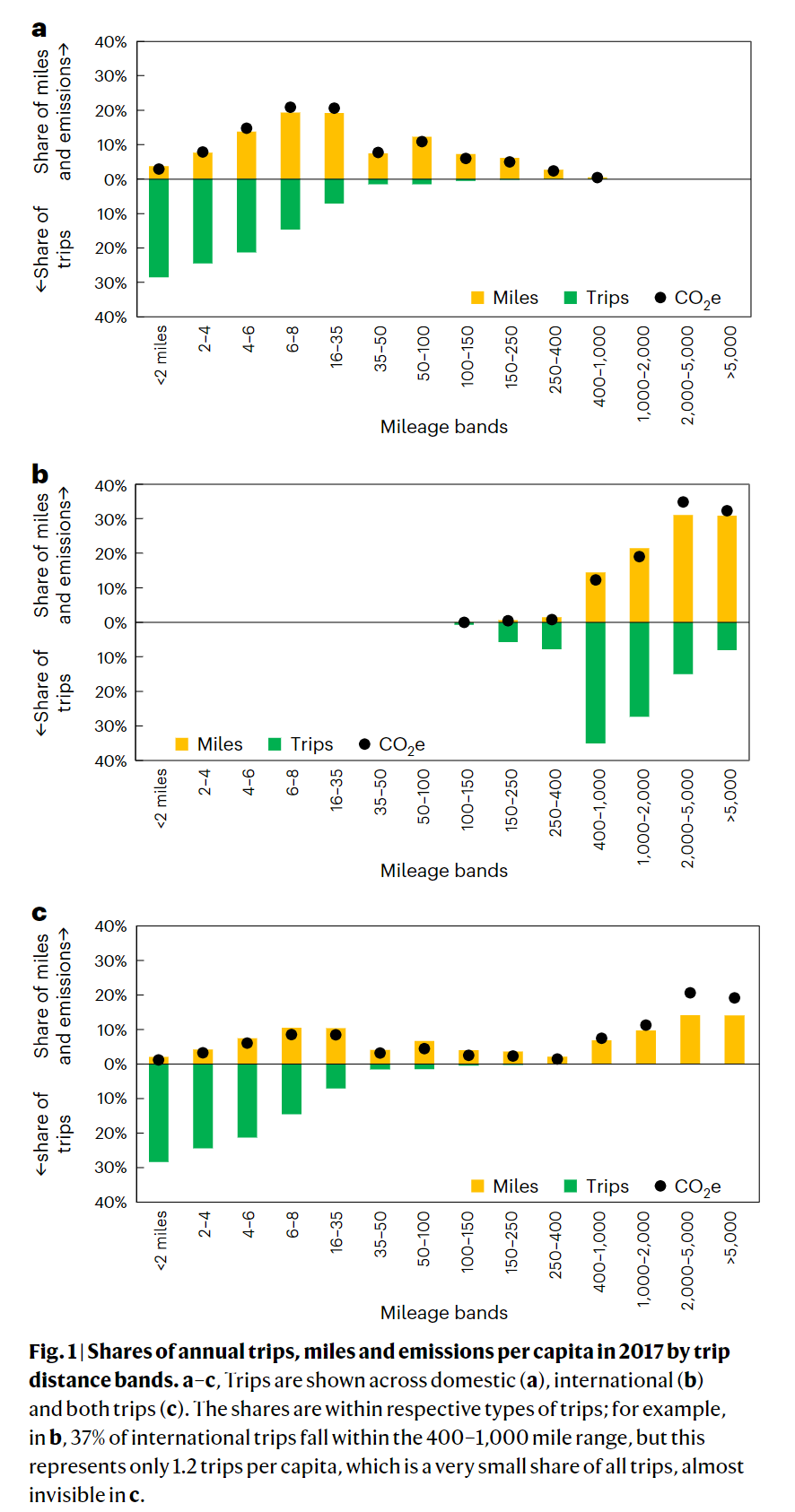
- Car is still the most frequently used mode (65.6% of LD trips), followed by rail (3.3 trips, 15.2%), flying (2.9 trips, 13.3), bus and coach
- Air travel contributes 72.2% of LD miles and 79.5% of LD emissions
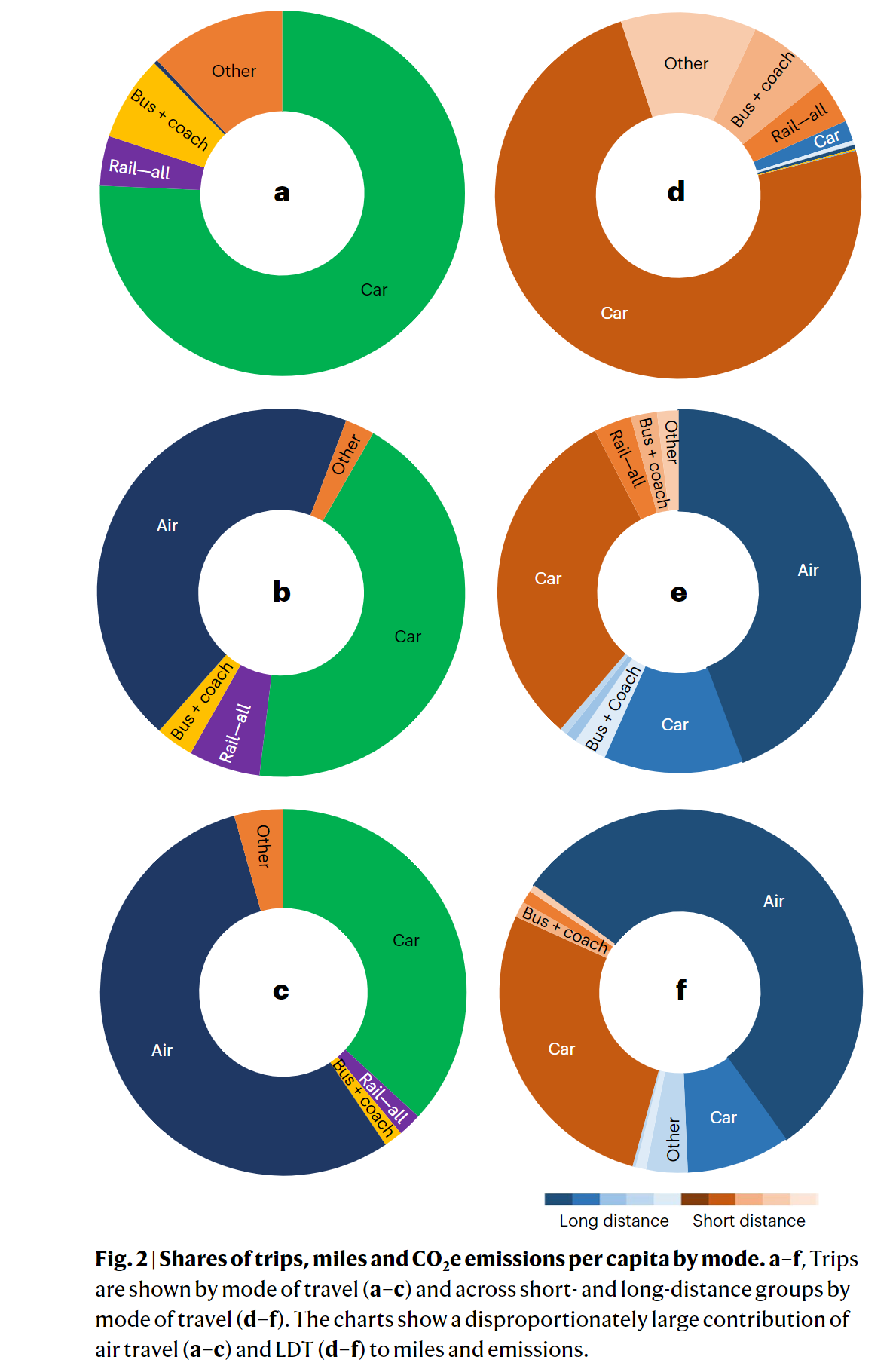
- A modal shift strategy of switching all car trips under 8 miles to walking and bicycles can potentially reduce total emissions by 9.3% but a very large disruption in existing travel behaviour
- Switching all LD car trips to rail can achieve an overall reduction of 5.2% disrupting only 1.8% of all trips
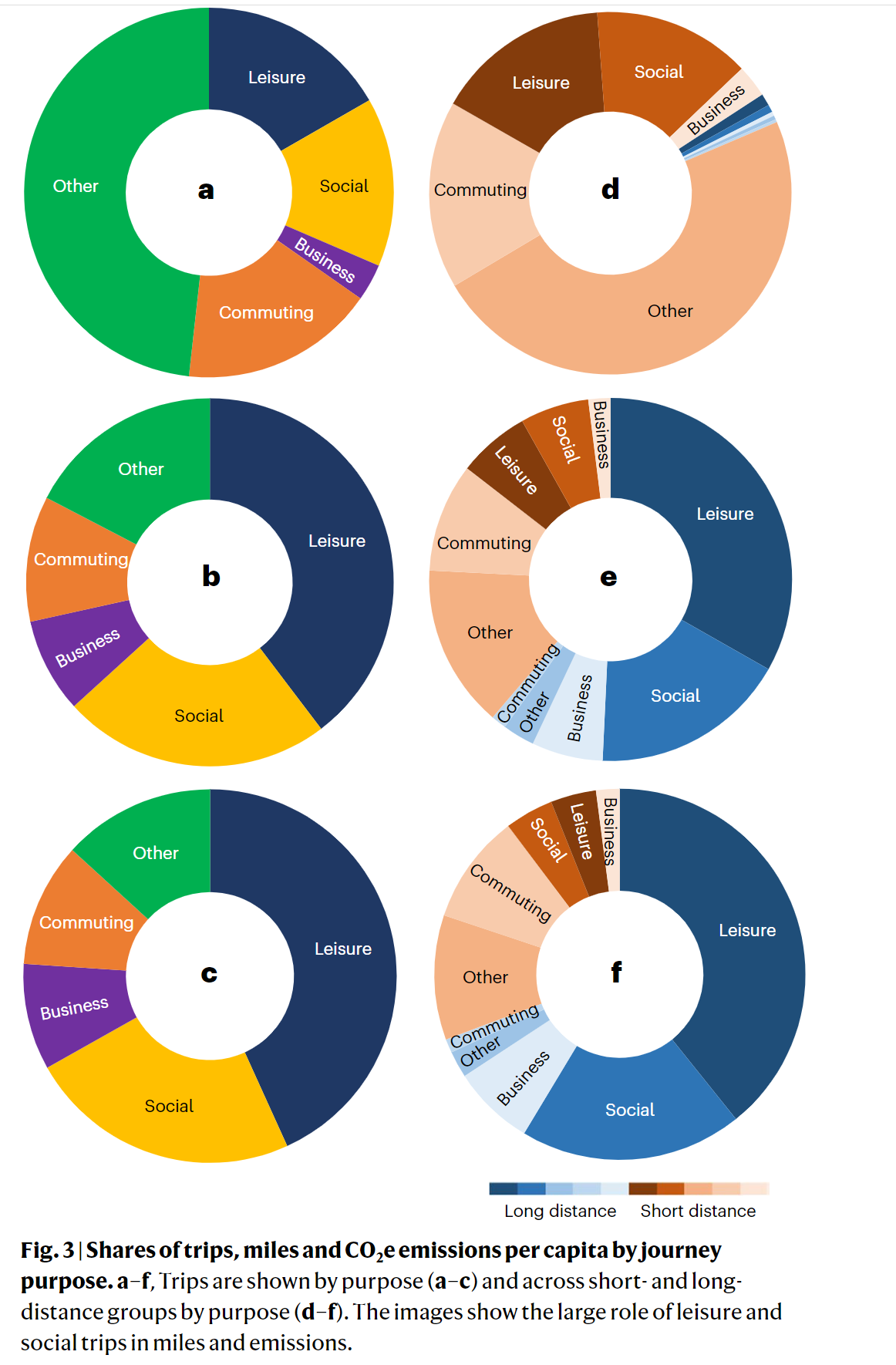
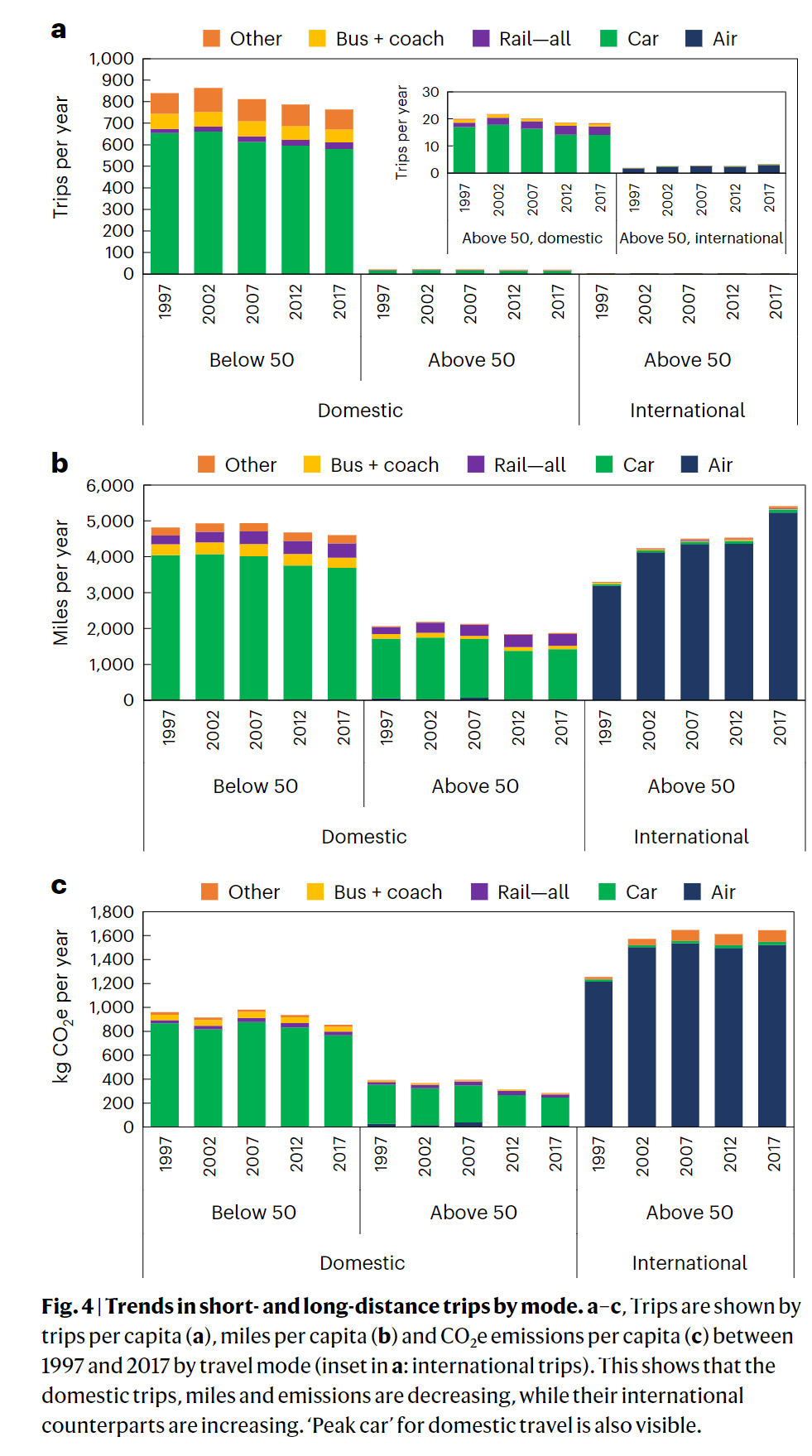
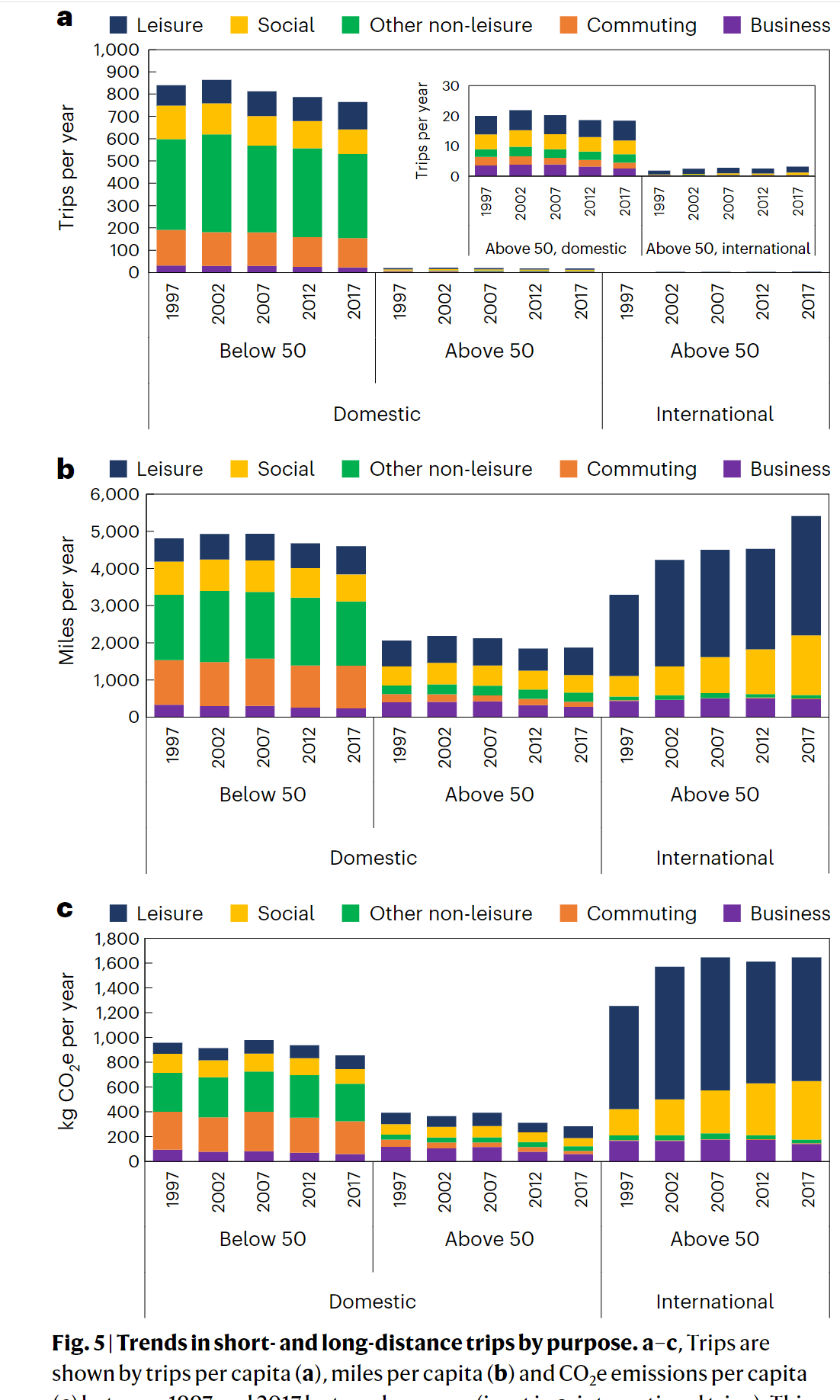
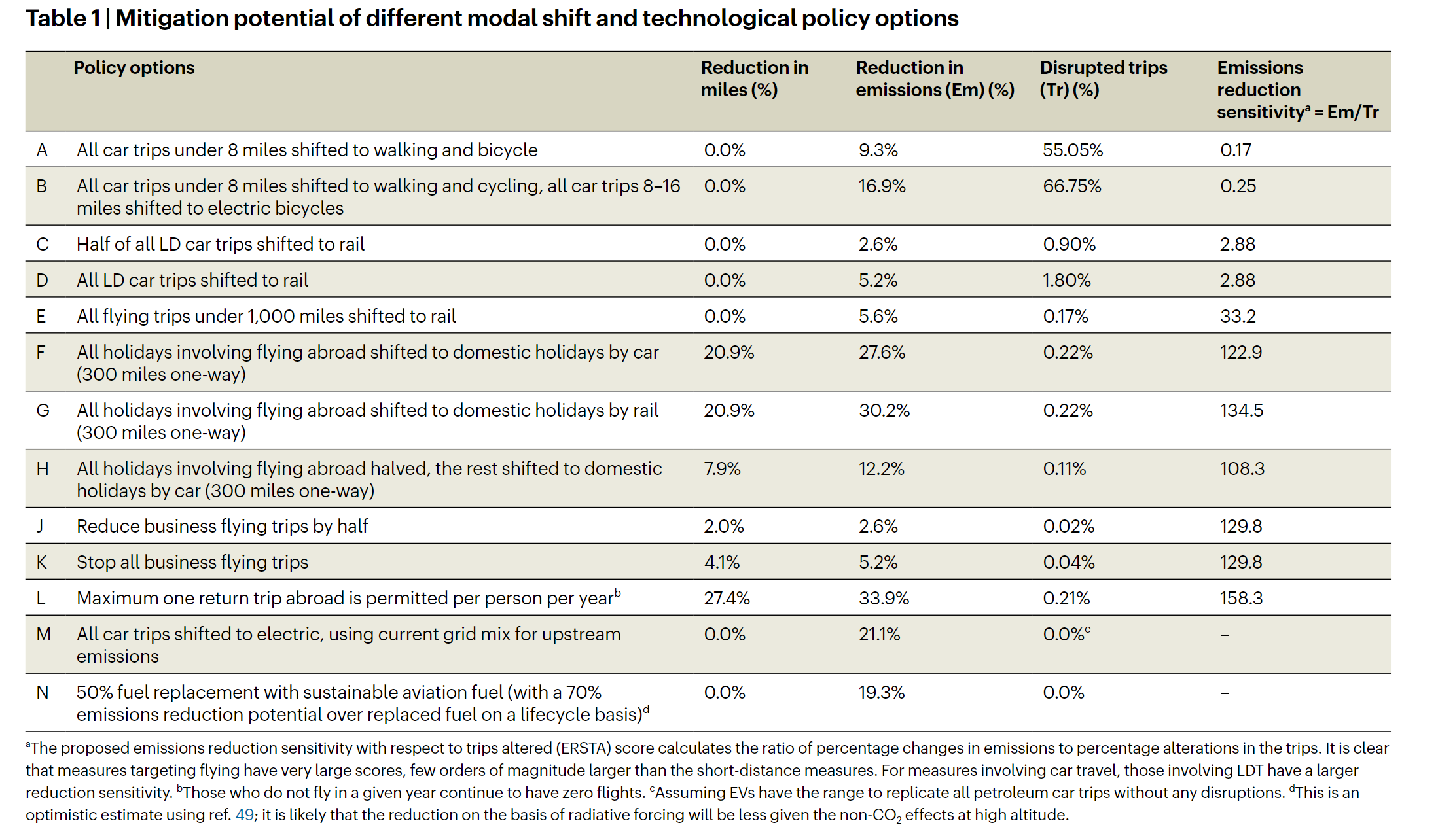
Coding Reference:






